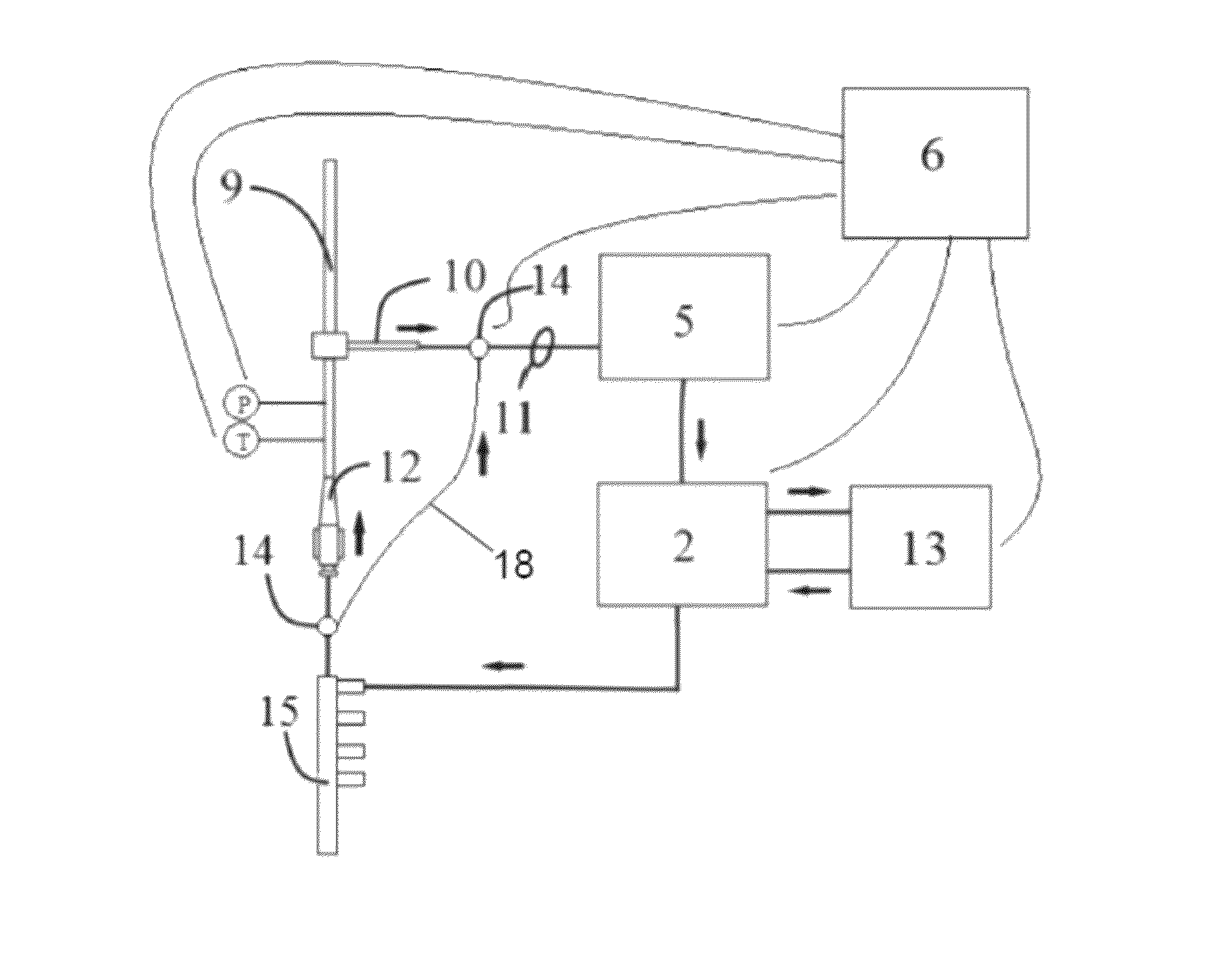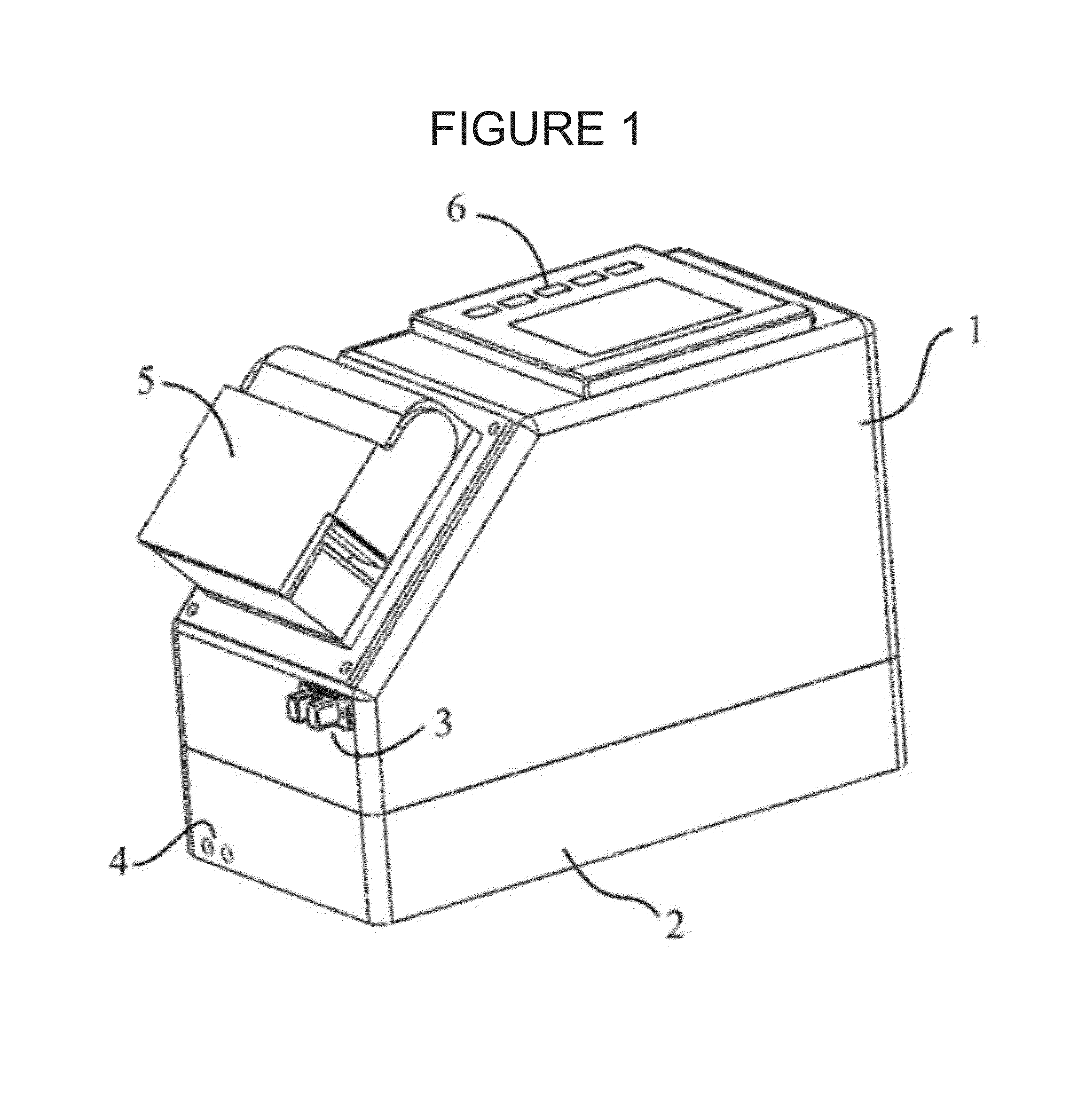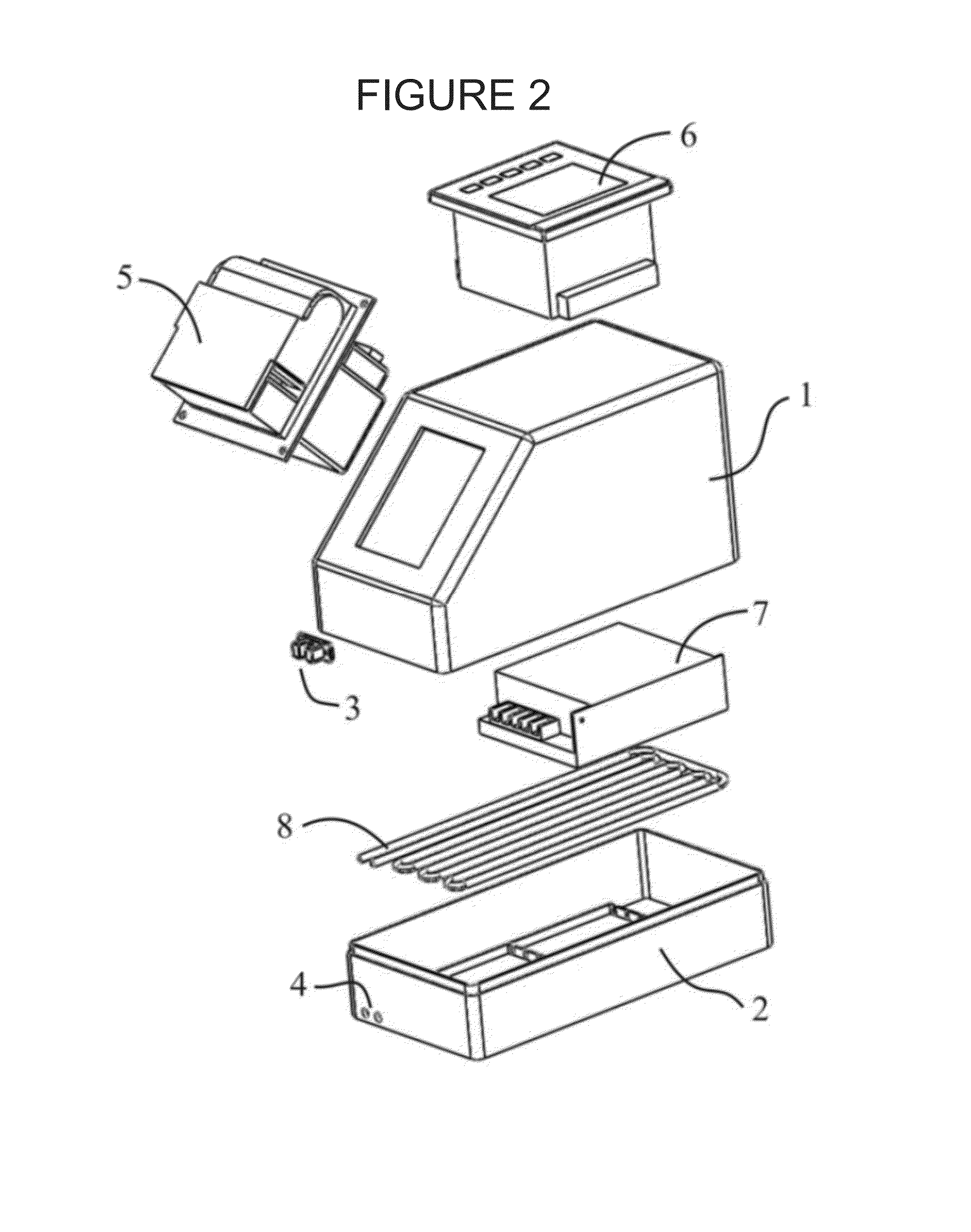Apparatus for treatment of reperfusion injury
a technology for reperfusion injury and apparatus, applied in the field of apparatus for treating reperfusion injury, can solve the problems of systemic cooling with specific limitations and drawbacks, significant tissue damage, reperfusion injury, etc., and achieve the effects of facilitating localized cooling of flow, reducing and minimizing the effect of reperfusion injury
- Summary
- Abstract
- Description
- Claims
- Application Information
AI Technical Summary
Benefits of technology
Problems solved by technology
Method used
Image
Examples
Embodiment Construction
[0040]The figures and their detailed description are not intended to limit the scope of the invention but to provide an overview of its various features connections and operation in one or more non-limiting embodiment.
[0041]Within the present disclosure the term “fluid” is used generically and refers specifically to blood from the patient, donor blood, artificial blood substitutes, saline, human albumin and all other substances able to be introduced into the body as is necessitated by the procedure.
[0042]Within the present disclosure the term “obstruction” refers to a complete or partial interruption within the pathway of a body passage. For example, obstruction can refer to an artery completely occluded by a clot or embolic particle or a partial reduction in luminal diameter resulting from a narrowing of a blood vessel.
[0043]Referring to FIG. 1 an isometric view of the cooling system of the present disclosure including a housing 1, control module 6, pump 5, housing base 2, fluid co...
PUM
 Login to View More
Login to View More Abstract
Description
Claims
Application Information
 Login to View More
Login to View More - R&D
- Intellectual Property
- Life Sciences
- Materials
- Tech Scout
- Unparalleled Data Quality
- Higher Quality Content
- 60% Fewer Hallucinations
Browse by: Latest US Patents, China's latest patents, Technical Efficacy Thesaurus, Application Domain, Technology Topic, Popular Technical Reports.
© 2025 PatSnap. All rights reserved.Legal|Privacy policy|Modern Slavery Act Transparency Statement|Sitemap|About US| Contact US: help@patsnap.com



